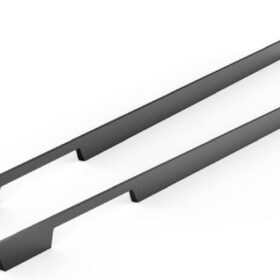Best Practices for Cleaning and Maintaining Kitchen Counter Handles
Kitchen counter handles are a breeding ground for bacteria and germs, making them a potential health hazard. Since they are constantly touched throughout the day, it’s crucial to implement a thorough cleaning and maintenance routine to keep them hygienic and extend their lifespan.
Regular Cleaning
The frequency of cleaning depends on the usage and type of handles. For daily use, wipe down the handles with a damp cloth or sponge and a mild detergent or disinfectant solution. Pay special attention to the areas where food or dirt can accumulate, such as the base and crevices. Once a week, use a stronger cleaning solution, such as a bleach or vinegar solution, and scrub the handles with a soft-bristled brush.
Material-Specific Cleaning
Different handle materials require different cleaning methods:
– Stainless steel: Use a stainless steel cleaner or a mixture of baking soda and water. Scrub with a soft cloth or sponge.
– Brass: Patina is a protective layer that develops on brass handles over time. To maintain the patina, clean with a soft cloth and a mild detergent.
– Granite: Use a granite cleaner or a mixture of baking soda and water. Avoid using acidic solutions, as they can damage the granite.
– Wood: Wipe down with a damp cloth or sponge. Use a wood cleaner or a mixture of olive oil and lemon juice for deeper cleaning.
Removing Heavy Grime
For stubborn grime, use a degreaser or a paste made from baking soda and water. Apply the paste and let it sit for a few minutes before scrubbing with a soft-bristled brush. Rinse thoroughly with water. If the grime is extensive, consider using a commercial handle cleaner specifically designed for the material.
Protecting and Maintaining
To prevent damage and keep handles looking their best, follow these measures:
– Avoid abrasive cleaners: These can scratch or damage the handles.
– Dry thoroughly: After cleaning, use a clean towel to dry the handles to prevent water spots or corrosion.
– Lubricate: For moving handles, apply a small amount of silicone spray or petroleum jelly to the moving parts to ensure smooth operation.
– Routine inspections: Regularly check the handles for signs of wear and tear. Tighten loose screws or replace damaged handles promptly.
By following these best practices, you can effectively clean and maintain your kitchen counter handles, ensuring a hygienic and aesthetically pleasing kitchen environment. Regular cleaning, using material-appropriate cleaning solutions, removing heavy grime, protecting and maintaining the handles will not only keep them looking their best but also extend their lifespan and prevent potential health hazards.
-
2024-11-29Top Trends in Modern Kitchen Cabinet Pulls for 2024
-
2024-11-28The Ultimate Guide to Modern Kitchen Cabinet Pulls- Materials, Styles, and Tips
-
2024-11-27Elevate Your Kitchen Design with These Must-Have Modern Cabinet Pulls
-
2024-11-26Sleek and Stylish- The Best Modern Kitchen Cabinet Pulls for a Contemporary Look










